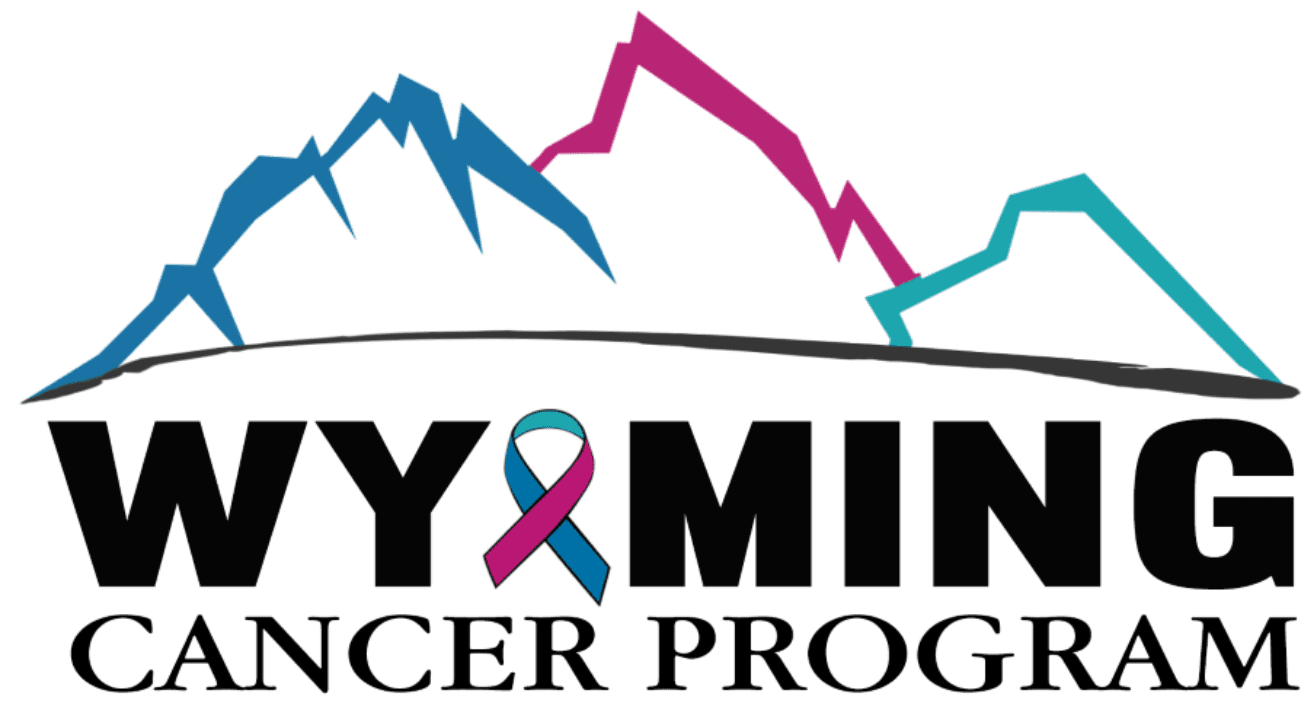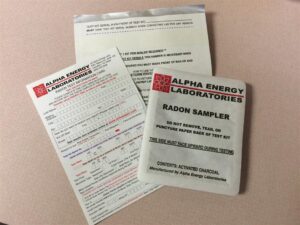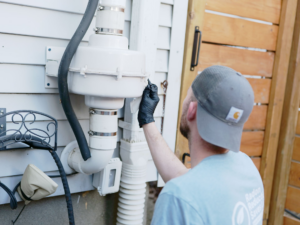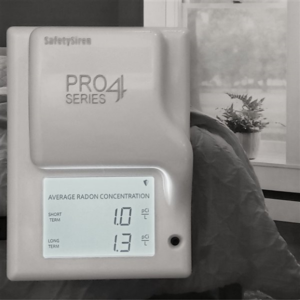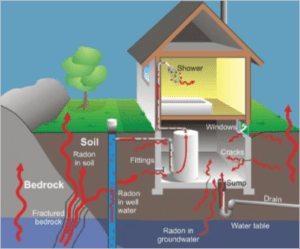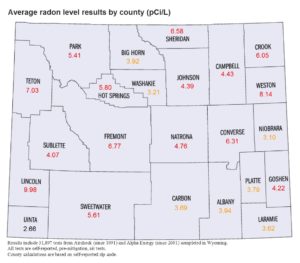The radon component of the Wyoming Cancer Program provides information to Wyoming residents, contractors, and real estate agents about radon.
What is radon?
Radon is a radioactive gas that doesn’t have a color, odor, or taste. Radon seeps up from the earth into the air we breathe, and comes from the natural breakdown of uranium in almost all soil.
To find out more about radon, please visit the EPA radon website.
Radon and your home
Your home can be at risk for radon if it is:
- New
- Old
- Well-sealed
- Drafty
- Built with a basement
- Built without a basement
Radon typically moves up through the ground to the air above and into your home through cracks and other holes in the foundation. Your home traps radon inside, where it can build up.
Any home may have a radon problem. This means homes can be at risk for radon whether it is new, old, well-sealed, drafty, with or without a basement.
Nearly 1 out of every 15 homes in the U.S. is estimated to have elevated radon levels.
If radon is allowed to accumulate, it becomes a health concern.
Health risks of radon exposure
Exposure to the radioactive particles in radon can damage the cells that line the lung and can cause lung cancer.
Lung cancer is the leading cause of cancer-related deaths in Wyoming. The EPA estimates that radon causes about 21,000 lung cancer deaths every year in the United States.
Radon can make the lung damage caused by smoking worse, putting smokers with elevated radon levels in their homes at an even higher risk for lung cancer.
Check out our interactive radon data map to see where higher levels of radon naturally occur compared to home test results. Radon data map information.
Average radon level per county
Order a radon test kit
The Wyoming Department of Health is proud to offer free home radon test kits, while supplies last. Test kits are available for purchase at a discounted rate for Wyoming residents if the free test kits have run out.
Test kits should be used in the lowest livable level of the home (crawl spaces not included) and placed in a central location. Test kits should not be placed next to windows, vents or any area that could cause a draft around the test kit, which could affect the results. Test kits should also be placed in a manner to prevent them from being kicked, bumped or disturbed. Once complete, follow the instructions on the test kit to send it to the laboratory directly.
Click here to order a test kit online (limit one per order) through our partner, Alpha Energy Laboratories, LLC. If more than one test kit is required, please call the Wyoming Radon Program at 307.777.6015 to place the order. For questions or more information, contact the Wyoming Radon Program at 307.777.6015. Haga clic aquí para pedir un kit de prueba en español.
If the test kit finds elevated radon levels in your home, please see “Find a radon service provider” below. These services are relatively simple and can usually be completed in about a day, providing an immediate reduction in radon levels.
Find a radon service provider
Please visit the National Radon Proficiency Program or the National Radon Safety Board to find a certified radon service provider near you.
Average Outdoor Level
Average Indoor Level
Fix It! Level
Radon levels are measured in picoCuries per liter (pCi/L). According to the EPA, any home that tests over 4.0 pCi/L should get fixed as soon as possible. Homes that test between 2.0 pCi/L and 4.0 pCi/L should still be fixed soon.

